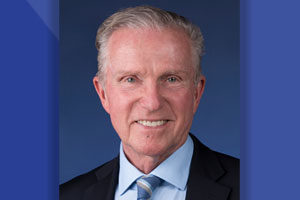It’s an important public service message. And it’s one that bears repeating among physician anesthesiologists – if you or someone you know is struggling with depression or considering suicide, call or text the National Suicide Prevention Lifeline at 1-800-273-TALK (8255) or 741-741.

Catherine Kuhn, M.D.
Wellness has long been a topic of discussion and education at the ASA annual meeting. This year is no exception. The Saturday session “Physician Suicide: What You Can Do to Save a Life” takes a powerful look at the influence colleagues can have on one another. Panelists will address identifying those at risk of death by suicide, and what can be done to reduce its incidence. Additionally, the panel will discuss resources and strategies for managing the aftermath of death by suicide in a colleague.

Michael Myers, M.D.
Panelist Michael Myers, M.D., Professor of Clinical Psychiatry at SUNY Downstate Medical Center in New York, will discuss the epidemiology of suicide in physicians, underlying illnesses, including the notion of indirect and direct drivers of suicide, and touch on the risk factors specific to anesthesiology. Dr. Myers, who wrote the book “Why Physicians Die by Suicide: Lessons Learned from Their Families and Others Who Cared,” will share important stories and lessons learned.
2:45-3:45 p.m
Saturday
W415A Valencia
“Stigma,” Dr. Myers said, “is a pernicious force in preventing doctors from getting life-saving help. Suicide prevention is everyone’s business. It takes a village.”
According to Dr. Myers, 85 to 90% of people who die by suicide have an underlying psychiatric illness, including burnout, anxiety, substance use, post-traumatic stress, unrelenting or progressive medical conditions and personality disorders and traits.
Add to that the risk factors that are inherent with being a physician anesthesiologist, and the stakes are even higher. Such factors include professional isolation without peer supports, perfectionism, a dogged need for autonomy and difficulty asking for help, hypertrophied altruism and self-neglect.
“The culture of medicine is unforgiving, praise-deficient, competitive, a hidden curriculum, and one of survival of the fittest, bullying and sexual harassment,” Dr. Myers said. “The final state is one of several converging factors bombarding the individual all at once in a ‘perfect horrific storm’ – the person is overwhelmed, frantic and desperate for relief from unbearable psychic pain.”
Suicide Among Anesthesiologists: Risk Identification and Interventions
9:15-10:15 a.m
Sunday
W414CD
It’s also a frightening fact that physicians know how to die by suicide and have access to means, such as self-prescribing (or fraudulent prescribing) of potentially lethal medications, he said.
There will be plenty of personal stories among the panelists to drive home the importance of caring for one another, and the impact it can have on colleagues. Panelist Catherine Kuhn, M.D., a Professor of Anesthesiology at Duke University, led Duke’s response to two resident suicides in her role as Associate Dean and Director of Graduate Medical Education.
“There are important elements of the initial and subsequent response to the discovery that a colleague has died by suicide,” Dr. Kuhn said. “The tragedy of a physician suicide creates a chaotic situation that requires an organized response on many levels – for individuals, families, the department and the institution.”
However, Dr. Kuhn points out that despite the frightening facts and recent media attention, physician suicide is a rare event in any anesthesiology group, which makes an organized response difficult.
“As anesthesiologists, we are trained to skillfully manage rare critical events that happen during patient care. However, we lack preparation for other types of rare, critical events in our departments such as the death of a colleague,” she said. “Institutions and anesthesiology departments would be wise to develop prospective plans for responding to the aftermath of a physician suicide.”
While the circumstances of a physician suicide provoke a variety of responses in family and colleagues, there are general concepts and strategies coworkers can follow. The first step is being aware of the experiences common to the loss of a colleague to suicide. From there, Dr. Kuhn said, it is important to prevent contagion, and allow colleagues to grieve and feel supported. Later, it is appropriate to raise awareness of the mental health needs of the medical community and engage in suicide prevention efforts.
Learning to identify a physician at risk is an important skill and one that will be discussed during Sunday’s session, “Suicide Among Anesthesiologists: Risk Identification and Interventions.” Speaker Michael Fitzsimons, M.D., an Anesthesiologist at Massachusetts General Hospital, will discuss how early detection may reduce the risk and allow intervention before a tragic event – a move that can make a big difference.
Return to Archive Index